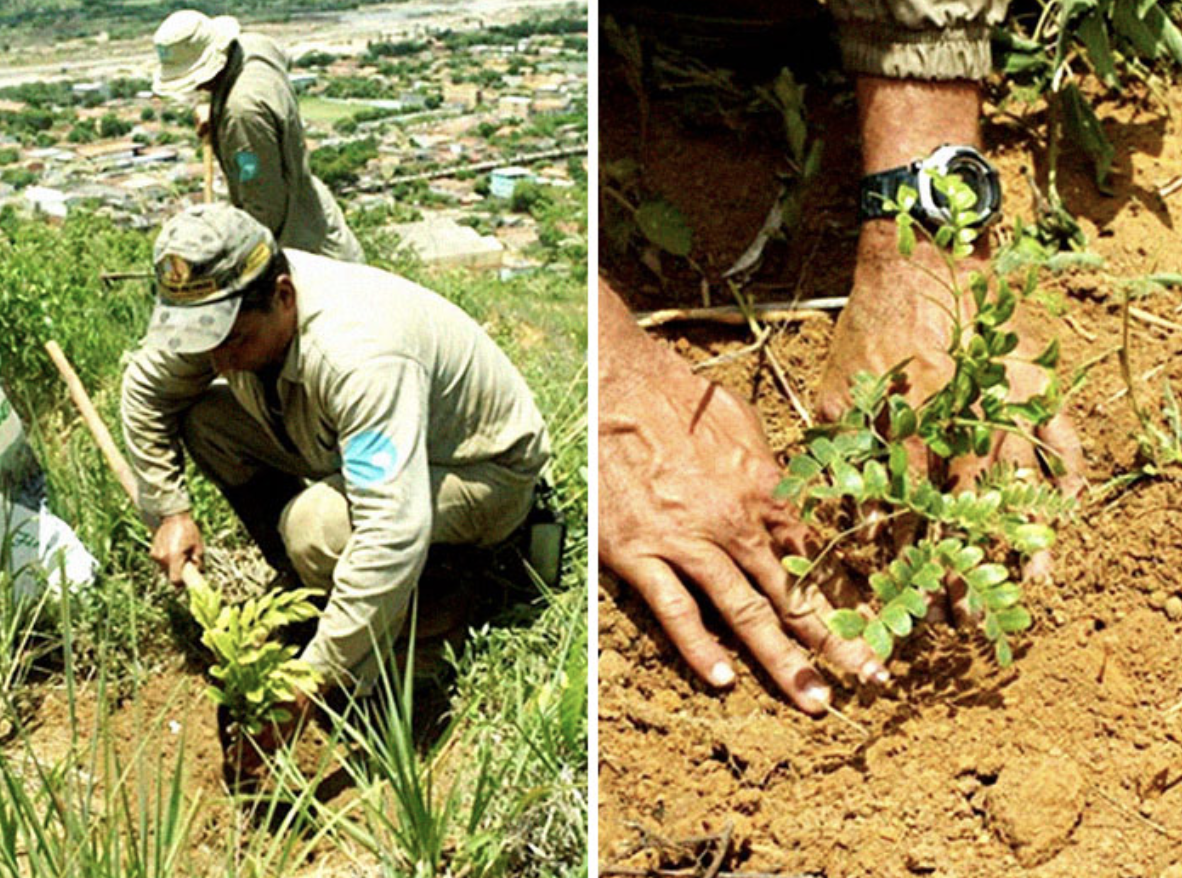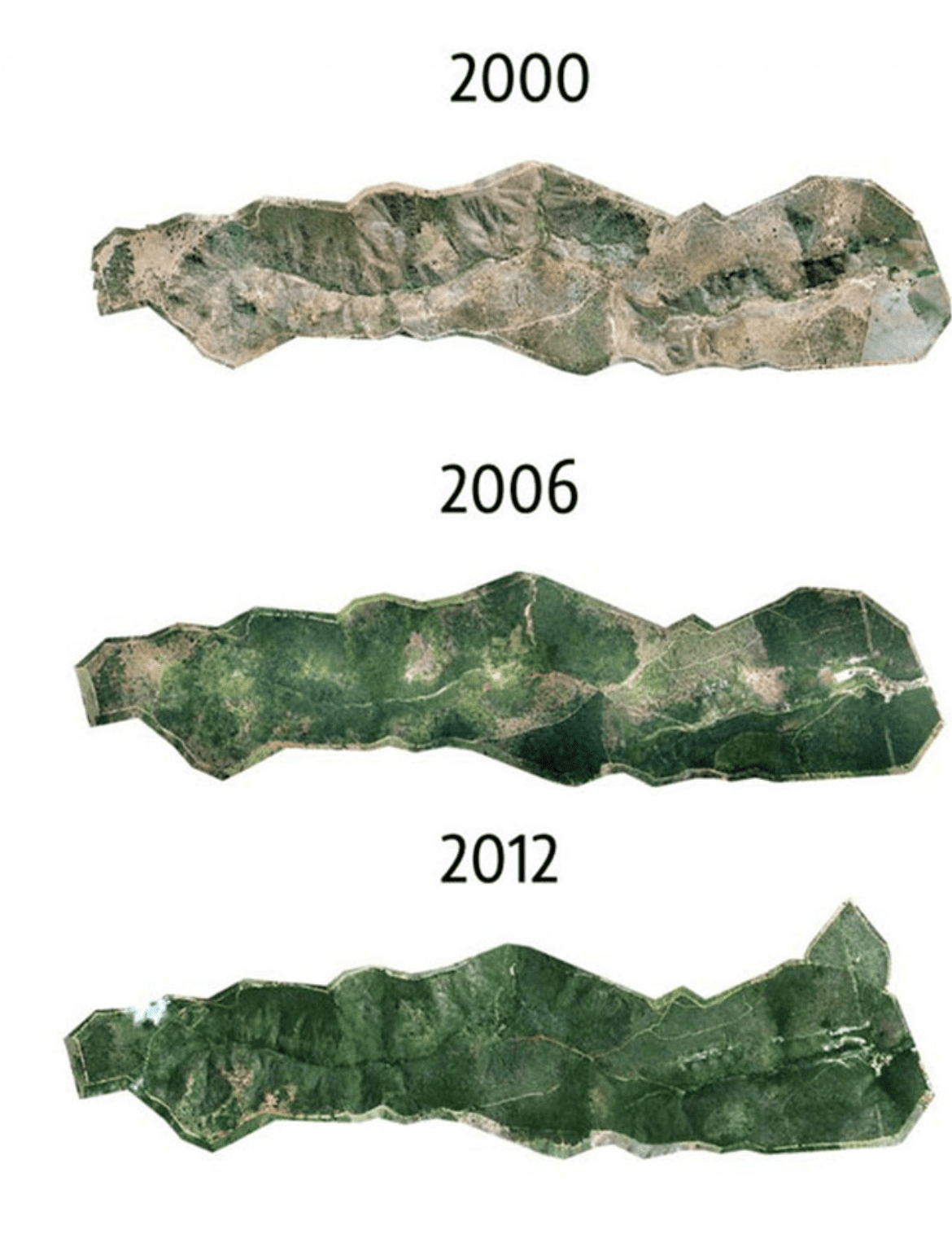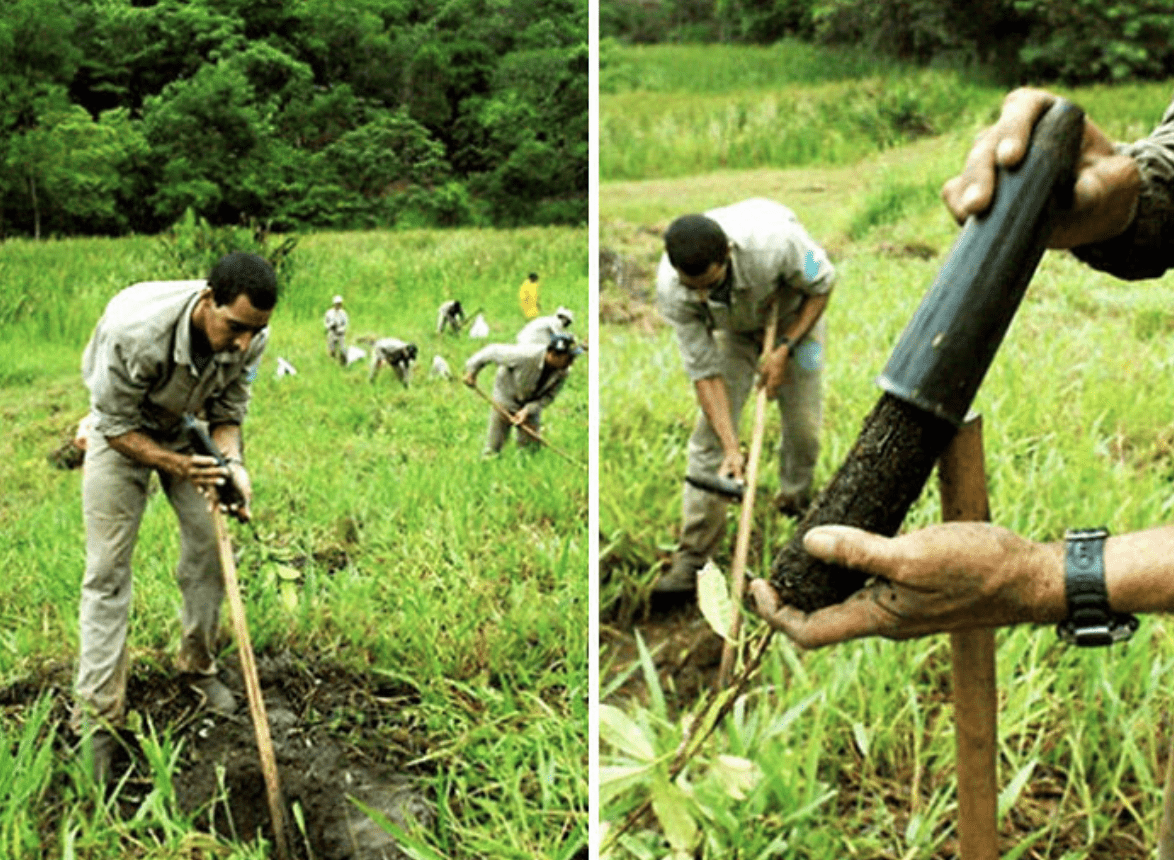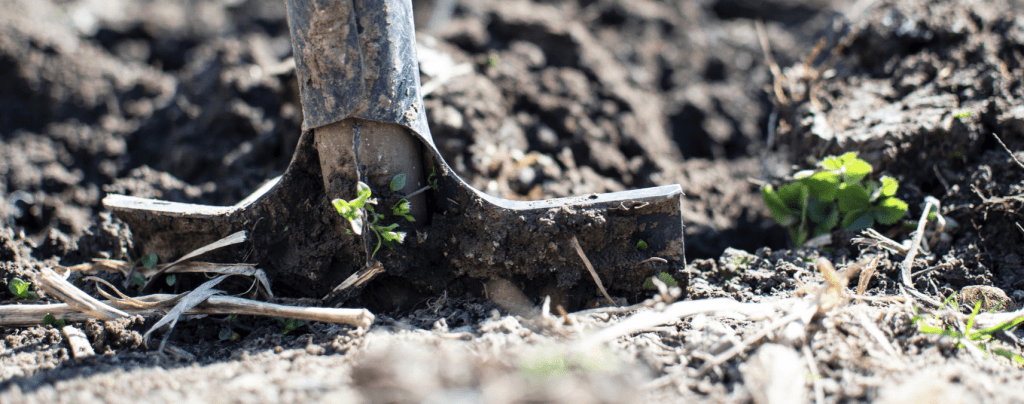Trending Now
Earth Day has come and gone, but as humans, we should consider doing something for our environment more than once a year. Of all the myriads ecological disasters befalling us, deforestation is one of the biggest issues we face. The Food and Agriculture Organization of the United Nations states that the growth of the global population from 7.6 billion to 10 billion in 2050 (estimated) will vastly effect how we use our land, likely including further deforestation:
“Land-use changes result in a loss of valuable habitats, land degradation, soil erosion, a decrease in clean water and the release of carbon into the atmosphere. How to increase agricultural production and improve food security without reducing forest area is one of the great challenges of our times.”
So what can we do? As we continue to expand into forested areas, deforestation can seem overwhelming.

Photo Credit: Instituto Terra
But not to Brazilian photographer Sebastião Salgado and his wife Lélia. Two decades ago, he took over the land he grew up on and was devastated by what he saw: deforestation at its most severe. The land no longer held the tropical paradise he remembered. Rather, it was desolate, and all the wildlife from his youth was gone.
Over the last 20 years, he and his family made it a mission to plant one tree at a time to restore his once beautiful homeland. The results are incredible.
An aerial view of the land.

Photo Credit: Instituto Terra
In an interview with The Guardian, Salgado said:
“The land was as sick as I was – everything was destroyed. Only about 0.5% of the land was covered in trees. Then my wife had a fabulous idea to replant this forest. And when we began to do that, then all the insects and birds and fish returned and, thanks to this increase of the trees I, too, was reborn – this was the most important moment.”
In April of 1998, they started an organization called Instituto Terra or “Earth Institute” and raised enough funds to plant 4 million saplings native to that land and surrounding areas.

Photo Credit: Instituto Terra
“Perhaps we have a solution,” Salgado said. “There is a single being which can transform CO2 to oxygen, which is the tree. We need to replant the forest. You need forest with native trees, and you need to gather the seeds in the same region you plant them or the serpents and the termites won’t come. And if you plant forests that don’t belong, the animals don’t come there and the forest is silent.”
The results of his restorative efforts are extremely impressive: 172 species of birds have returned, 33 kinds of mammals, nearly 300 species of plants, and 30 species of reptiles and amphibians. His institute managed to rebuild an entire ecosystem from literally the ground up.
It just goes to show, if you have passion and commitment, you can achieve anything. And when it comes to our environment, that is priceless. I’ll give Salgado the last word:
“We need to listen to the words of the people on the land. Nature is the earth and it is other beings and if we don’t have some kind of spiritual return to our planet, I fear that we will be compromised.”






